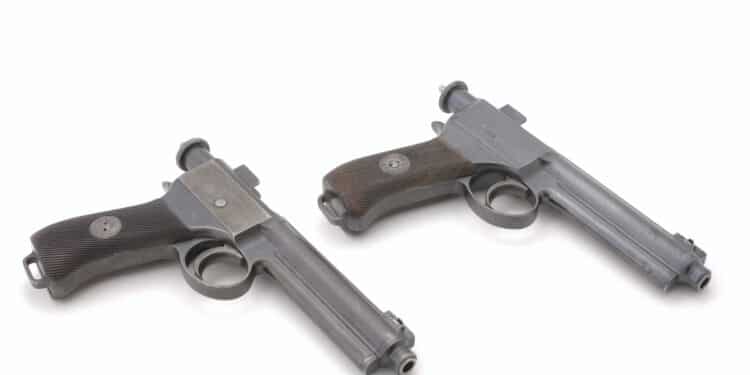The history of the Steyr Arms company of Austria, formerly known as Steyr-Mannlicher, and previously as Steyr-Daimler Puch, Steyr-Werke, and OWG or “Österreichische Waffenfabriksgesellschaft Steyr”, is strictly intertwined with the development of the rotary barrel locking system for handheld firearms.
Most gun enthusiasts will know that the Swiss-made B&T MP9 rotary barrel sub-machine gun was developed by Steyr-Mannlicher and manufactured in Austria from 1992 to 2001 as the Steyr TMP; but that’s just scratching the surface. Things between Steyr and the rotary barrel go way back – to the early 20th Century, to be more precise.
A LOT OF FIRSTS
At the turn of the 20th Century, the Austro-Hungarian Empire was a centuries-old, declining global power, but a major power nonetheless; a status that it would formally retain until its defeat in World War I and its subsequent dissolution.

As such, it retained a massive military that strived to remain equipped with the latest, cutting-edge technology. In 1898, the Austro-Hungarian army had adopted a new sidearm in the form of the Mod.1898 Rast & Gasser revolver. It was chambered for a proprietary 8mm Gasser rimmed cartridge. Despite fairly modern (for the time) features such as an eight-round cylinder and a double-action trigger, the Rast & Gasser retained other characteristics, including an Abadie gate-loading system and an ejector rod, that made it obsolete right from the very get go.
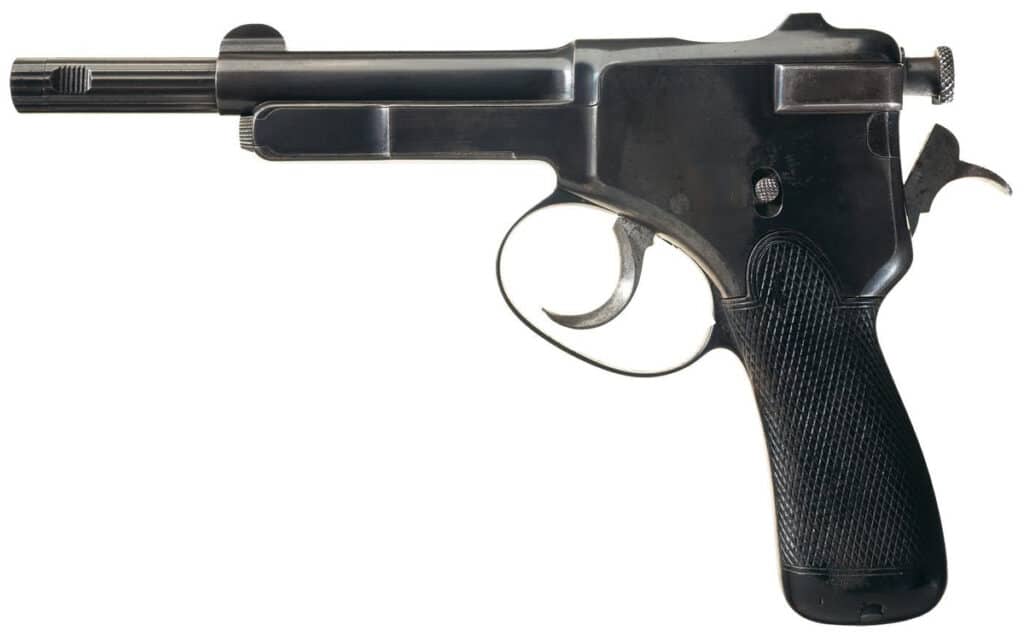
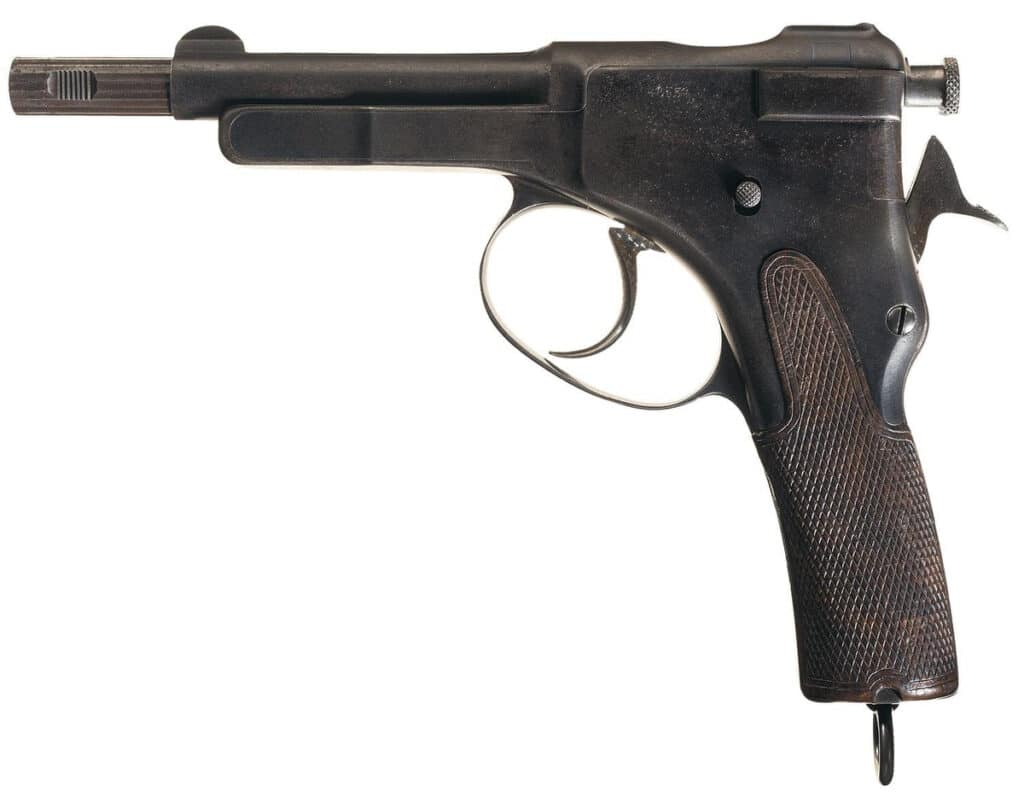
And this, at a time when designers worldwide were already experimenting with increasingly reliable semi-automatic pistols that were seeing limited military adoption by the militaries of smaller countries and, in certain cases, by specialized troops and the navies of major powers, the Mauser C.96 was ordered by the Turkish Army, the Italian Navy, and saw success in China, while the Luger pistol first entered service in Switzerland, then with the Imperial Navy in Germany, a foreshadowing of the full-scale adoption that was to come.
Little did those countries know, the Habsburg empire would outrun them all, and with a domestic design nonetheless, the brainchild of Karel Krnka.
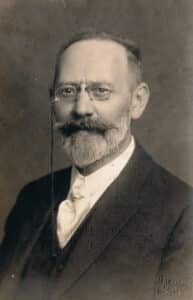
Born in Bohemia (which was part of the Austro-Hungarian Empire and would now be in the Czech Republic), Karel Krnka followed in the footsteps of his father Sylvester, who had designed the breech-loading conversion for the 1857 Six-Line musket used by the Russian Empire. Early in his career, he designed a few ill-fated breech-loading, straight-pull, and bolt-action rifles. In the late 19th Century, after a stint in England, he started working on handguns under the patronage of Georg Roth, owner of one of the biggest ammunition manufacturing companies in the empire.
Some years earlier, another handgun designer by the name of Wasa Theodorovic had worked under the patronage of Roth, coming up with a series of pistol prototypes, aptly dubbed the Roth-Theodorovic, that the company had not been able to successfully pitch. Karel Krnka extensively reworked the original Theodorovic design into various prototypes, adding or removing features as the development phase went by. Among other things, Krnka did without an external hammer and any manual safety of sorts, briefly experimenting with a grip safety before settling on a peculiar striker-fired trigger system that looks very familiar today.
The final iteration of the pistol, now known as the Roth-Krnka, was submitted to the Austro-Hungarian military in 1906 and officially adopted in 1907, hence the official denomination “Repetierpistole M.7” for “Model 1907 repeating pistol”. The Austro-Hungarian government acquired all rights and appointed the two major firearm manufacturers of the Empire to produce it broad numbers for the entire military, with cavalry units being designed as early adopters due to the specific features that made the Repetierpistole M.7 ideal for cavalry units.
The biggest manufacturer was, of course, OWG (a.k.a. Steyr), which further refined the project from an industrial point of view, adapting it to broad-scale manufacturing. It produced approximately 60,000 samples, which is why the pistol is today known as “Roth-Steyr”. However, the FEMARU Fegyvergyár Részvénytársaság of Budapest (later known as FÉG) was also in the game, manufacturing about 30,000 samples from 1907 until the end of World War I.
Just like that, Austria-Hungary had beaten all major powers in adopting a semi-automatic pistol as the standard service sidearm for its armed forces.
FAMILIAR FEATURES
The Repetierpistole M.7 is a hefty piece of machined steel, with a very long, sliding bolt assembly entirely enclosed in the frame. Locking is achieved by two cams machined on the barrel itself, which engage two slots within the front of the bolt assembly that wraps around the barrel.

As the pistol is fired, the barrel moves with the bolt for approximately 13 mm (½-inch) until a set of two front cams integral to its cylindrical body engage with a corresponding set of helical guides machined into the barrel bushing, blocking its rearward movement. This disengages the barrel from the bolt body and forces it to rotate 90-degrees clockwise while the bolt assembly completes its rearward movement, ejecting a spent case and picking a new round from the magazine and feeding it to the chamber as it is pushed back to the locked position by the return spring.
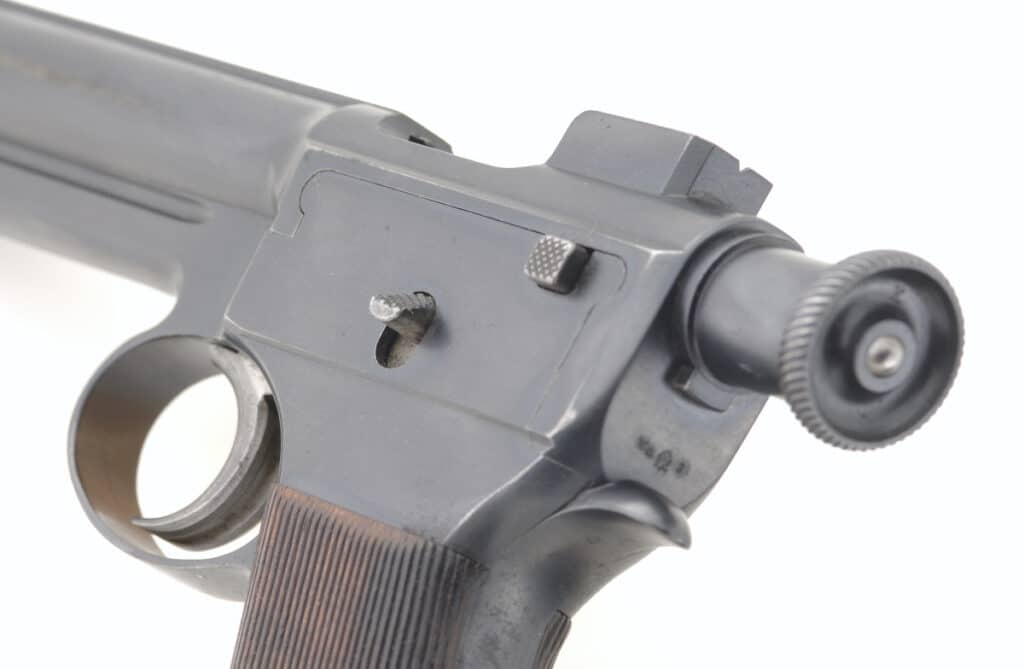
The Repetierpistole M.7 is a striker-fired pistol, with a trigger that can be described as half-way between a single and double action. When the plunger (which hosts the striker) at the rear of the pistol’s body is pulled back and released, the rear portion of the striker’s body protrudes from the end cap to signal the cocking status; but the striker is actually only half-cocked. As pressure is applied to the trigger, the sear pushes the striker all the way back to a fully armed position until it disengages it, allowing the striker to spring down and hit the chambered round.
Should the round fail to fire, the striker must be manually cocked by pulling again on the plunger; a built-in safety intercept system prevents the striker from reaching the primer and igniting the round if the gun is fired when out of battery. When all ammunition is spent, the bolt assembly locks back to the open position; once the Repetierpistole M.7 is reloaded, it’s brought back to the locked position by pushing on a slide stop tab located above the grip.
What we are looking at, here, is essentially not only the first semi-automatic pistol to be adopted by a major military, and not only the world’s first rotary barrel pistol, but also the first “Safe Action” pistol. Glock’s signature trigger goes back a long way, but its roots are traced back to Austria. The trigger system was one of the reasons why the Roth-Steyr design was considered to be particularly adequate to the needs of cavalry units; the gun simply can’t fire by accident and features a hold-open device for one-handed operation.
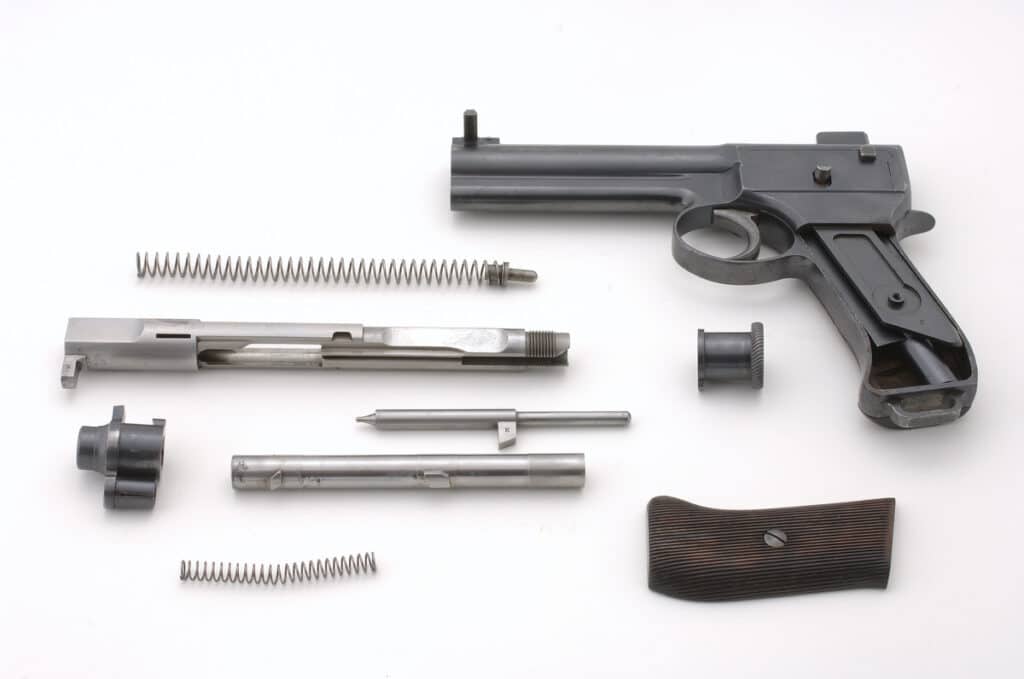
The grip of the Repetierpistole M.7 is one with the frame, features wood panels, and double as the pistol’s magazine, which is loaded from the top via the ejection port using stripper clips. The M.7 held ten rounds of a proprietary .32 caliber (dubbed 8mm Steyr or, more accurately, 8×19mm Roth-Steyr). Slightly more powerful than 32 ACP, it was originally made available to the Austro-Hungarian military by its own ordnance factories in a 113-grain load with greased, unplated steel-jacketed bullets, although some private suppliers, including Georg Roth’s own factory, did manufacture cupro-nickel jacketed loads.


Regardless, all ammunition for the M.7 came pre-loaded in a stripper clip with a plunger to assist loading and prevent mishaps that could cause rounds to be ejected uncontrollably under the pressure of the follower springs. The stripper clips were packaged individually, and the M.7 featured a tab located above the grip that could be pushed when the bolt was locked in the open position to unload the magazine by, you guessed it, just ejecting the rounds from the top window.


FORGED IN FIRE
The service history of the Repetierpistole M.7 is inextricably tied to the downfall of the Austro-Hungarian Empire, as the pistol had its baptism of fire on the cruel battlefields of World War I. Outside of a small batch of German-produced Sauer variants of the design sold on the civilian market starting in 1900, in fact, the Roth-Steyr Model 1907 failed all military bids outside of Austria-Hungary, including two separate pitches to the militaries of the U.K. and the U.S., where it was unsuccessfully offered in a .45 caliber variant.
As the fortunes of war turned against the Central Empires, the number of M.7s in service quickly turned out to be insufficient. Starting in 1912, the Austro-Hungarian military had been complementing it with the Repetierpistole M.12, a.k.a. the Model 1912 Steyr Hahn, a hammer-fired, stripper-clip fed pistol that was easier to manufacture and more powerful than the Roth-Steyr, being chambered in 9×23mm Steyr and 9mm Luger.
Nevertheless, the Habsburg Empire’s need for handguns during the war ended up vastly outpacing the local industry capabilities; like their counterparts in the German Empire, the Austro-Hungarian troops had to resort to the “Behelfpistole” (“Necessity pistols”), often privately equipping themselves with commercial handguns chambered in a myriad of different calibers. As the defeated Empire collapsed and disintegrated after World War I, a myriad of new independent states were born where it once stood. These states, including the Austrian republic, Hungary, and Yugoslavia, ended up inheriting vast quantities of Repetierpistole M.7s and all fielded them before and (in small numbers) during World War II.
Austria’s arch-enemy Italy ended up capturing swathes of Roth-Steyr pistols during World War I and received many more as reparations; those guns were retained in service as rear-echelon sidearms for decades, so much so that Italy’s biggest ammunition manufacturer, Fiocchi, produced vast quantities of jacketed 8mm Roth-Steyr ammunition. The 1920s and 1930s saw those guns issued to Askari units with the Italian colonial troops in Africa, and in the final chaotic months of World War II, the Italian fascist troops that remained loyal to Mussolini and to the Germans fielded them in the last desperate attempts to stop the Allied offensive across the country.
That was the swan song of the Roth-Steyr Repetierpistole Model of 1907. Today, a small (but not small enough to make them rare) number of these survive on the civilian collector market in Europe and the United States. Their conditions may vary, but those that are still in good condition can return decent results at the range. Among other companies, Fiocchi still manufactures an 8mm Roth-Steyr load with Boxer primers and 113-grain FMJ bullets, developing approximately 329 fps of muzzle velocity and 290-foot pounds of muzzle energy, considered safe for these old timers.


However, if well kept, the Roth-Steyr Repetierpistole M.7 can reasonably be tested with original ammunition. I remember such a case from early on in my career when I worked for the historical (and now defunct) Italian gun magazine “Diana Armi” in the early 2000s. My colleagues and firearm collectors Roberto Allara and Oscar Groppo fortuitously came into possession of ten 8mm Roth-Steyr rounds (marked “GR” (for Georg Roth!) and manufactured in 1910) that were recovered by a friend in the woods of northern Italy, the location of many bloody gunfights between fascist troops and partisans in the final months of World War II.

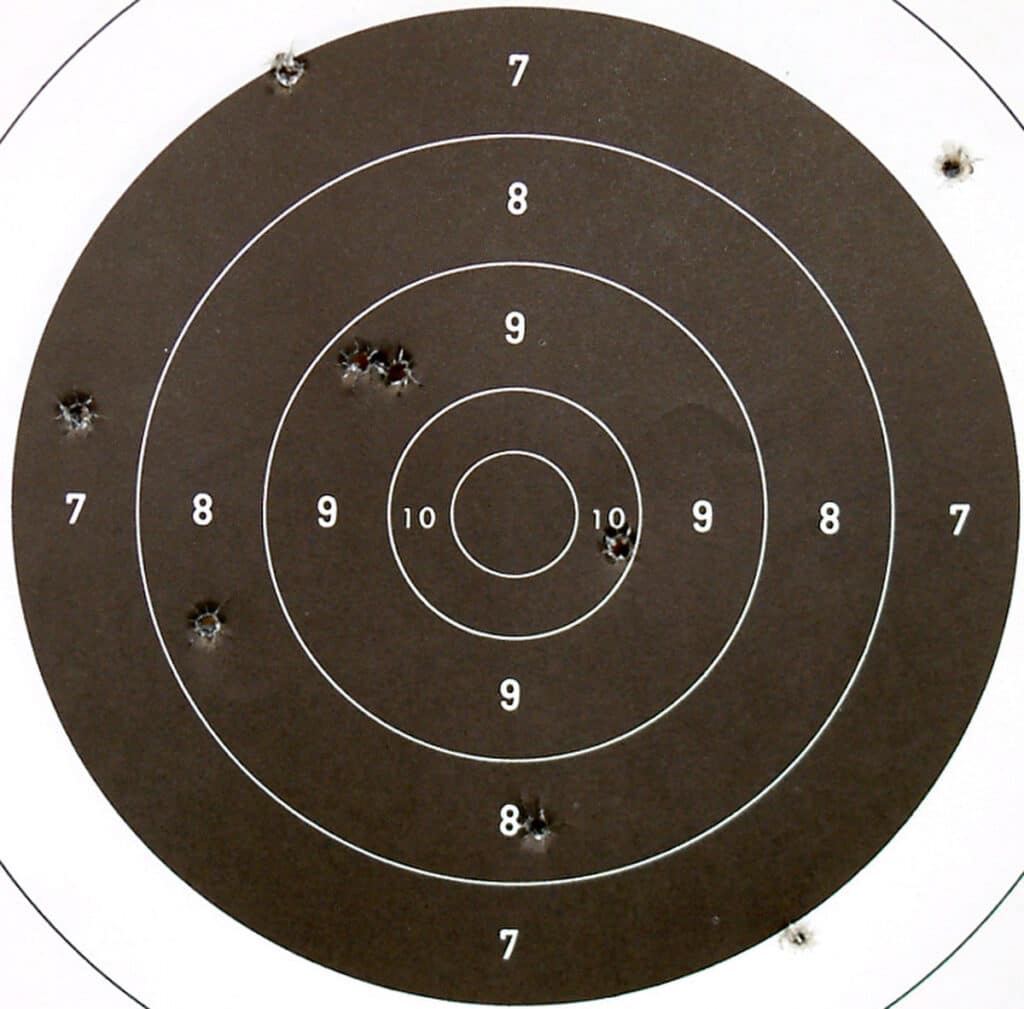
Once each round was inspected for lack of corrosion and painstakingly restored, and, fighting back the protests of antique ammunition collectors who wanted to prevent such a waste, the two colleagues brought a third party on board who happened to own a Roth-Steyr M-1907 pistol. Two attempts to use the original stripper clip failed, but third time is always a charm… and there they went, on a 15-meter range, putting nine rounds out of ten on target, progressively getting closer to the bullseye. That’s what you get from a 100-year-old pistol and 100-year-old ammunition… if you’re brave enough.
The things we do for science…
TECHNICAL SPECIFICATIONS
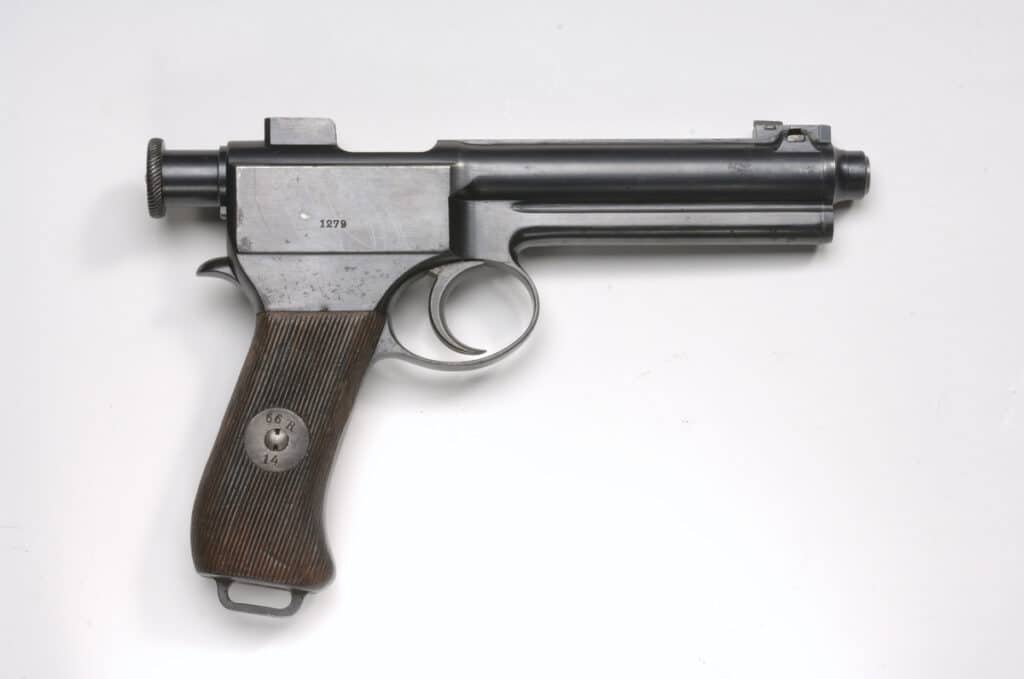

| Manufacturer | OWG Steyr, FEMARU |
| Model | Roth-Steyr Repetierpistole Model 1907 |
| Type | Semi-automatic pistol |
| Caliber | 8mm Roth-Steyr (8×19mm) |
| Action | Semi-automatic, striker-fired hybrid trigger, rotary barrel locking |
| Safety | None – manual, automatic firing pin safety |
| Capacity | Ten rounds in internal magazine, loaded by stripper clip |
| Sight systems | Fixed front post and rear |
| Barrel length | 5.1 in. 4-groove, RH |
| Total length | 9.1 in. |
| Weight (empty) | 2.2 lb. |
| Materials | Wood, steel |



